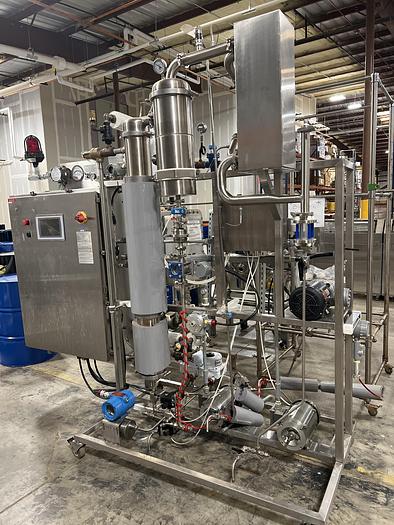Solvent Recovery Equipment for Smarter, More Sustainable Chemical Manufacturing Solutions
Integrating solvent recovery equipment into chemical manufacturing processes is a transformative step towards more sustainable and efficient production systems. The growing emphasis on environmental responsibility and cost-effectiveness has driven industries to adopt advanced technologies that reduce waste, minimize energy consumption, and enhance resource utilization. Solvent recovery is one such technology that plays a crucial role in achieving these goals. By capturing and reprocessing solvents used in various stages of chemical production, this equipment not only decreases reliance on raw material inputs but also significantly reduces the environmental footprint of manufacturing operations. The integration of solvent recovery systems involves capturing solvents from exhaust gases or process streams, distilling them to remove impurities, and returning the purified solvents back into the production cycle. This process leads to multiple advantages. First, it reduces the demand for virgin solvents, thereby lowering procurement costs and contributing to a circular economy. Second, it minimizes the generation of hazardous waste, a key concern for chemical manufacturers looking to comply with increasingly stringent environmental regulations.

By recovering solvents instead of discarding them, companies can significantly cut down on waste disposal costs and mitigate potential environmental risks. Furthermore, solvent recovery systems often offer significant improvements in energy efficiency. Modern technologies allow for the recovery of not just solvents but also the heat generated during the process. This heat can be redirected to other parts of the production system, reducing the need for external energy inputs and further cutting operational costs. In addition, the cleaner, less contaminated solvents that are reintroduced into the production cycle often result in higher-quality outputs, reducing the need for reprocessing or the use of additional chemicals. Industries relying on solvent recovery equipment processes benefit from solvent recovery equipment, which recycles solvents, conserves resources, and cuts down on emissions. Beyond cost savings and waste reduction, solvent recovery equipment also supports compliance with regulatory standards.
As governments worldwide introduce stricter environmental regulations, manufacturers face increasing pressure to reduce emissions, limit volatile organic compounds VOCs, and manage waste streams more responsibly. Solvent recovery systems help companies meet these requirements by cutting down on VOC emissions and reducing overall environmental impact. The implementation of solvent recovery technology also fosters a culture of sustainability within the manufacturing sector. By prioritizing waste reduction, energy efficiency, and resource conservation, chemical manufacturers position themselves as leaders in sustainability, enhancing their reputation and appealing to eco-conscious consumers and investors. Moreover, the ongoing improvements in solvent recovery technology ensure that these systems become more affordable and efficient, offering even greater long-term value for businesses looking to make sustainable manufacturing practices a central component of their operations. The wiped film distillation is ideal for high-viscosity liquids, as it ensures efficient separation without compromising the integrity of sensitive substances.